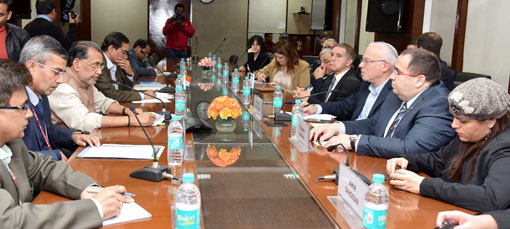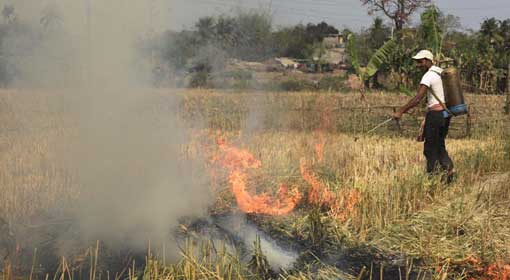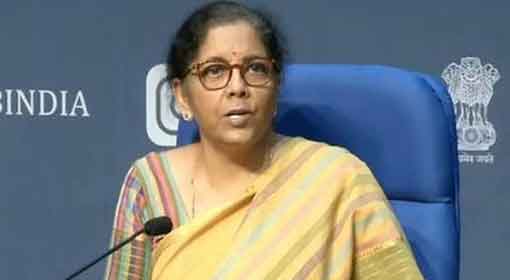New Delhi: Union Finance Minister Nirmala Sitharaman presented the Union Budget, for the year 2010-21, in the Lok Sabha. It is claimed that the relief for the people in the income group 500,000 to 1,500,000, in the income tax, is the highlight of the budget. It is also claimed that as the person will have to forgo the allowed deductions, this relief will not be beneficial for the taxpayer. But the Union Finance Minister has rubbished these claims. At the same time, the highest priority has been given to the infrastructure development in the agriculture and manufacturing sector, attempting to increase the speed of national development.
Prime Minister Narendra Modi expressed confidence that this budget will strengthen the foundations of the nation’s economy. Finance Minister Sitharaman announced the tax rate cuts saying that if there is more money in the hands of the middle class, they will spend more, increasing the demand. The taxpayers have been divided into five slabs and people with earnings in the range of 500,000 to 1,500,000 have been given the maximum concession. But the experts are pointing out that to avail this benefit; they will have to forgo the allowed deductions. Therefore, the experts say that the taxpayer will not be benefited to a great extent. But Nirmala Sitharaman has dismissed these claims saying that certain deductions have been retained.
 Against the background of this confusion, the stock market recorded a slump. But as per some economists, the share market crash, following the budget, was seen because unreasonable demands of the investors did not meet.
Against the background of this confusion, the stock market recorded a slump. But as per some economists, the share market crash, following the budget, was seen because unreasonable demands of the investors did not meet.
Nirmala Sitharaman said that the principles behind the budget were, country’s aspirations, all-inclusive economic development, and society benefit. The budget focuses on the 61.1 million farmers with an objective of doubling the income in their hands, by 2022. The Union Finance Minister said that the development of agro-businesses is being stressed upon to achieve this increase in the farmers’ earnings.
Sitharaman clarified that more efforts will be going into the transport and storage of the agricultural produce. The budget earmarks ₹15 trillion for agricultural financing. This budget has a provision of ₹1.07 trillion for the development of infrastructural facilities. This will have a very positive impact on the economy. The government will soon announce the National Logistics policy. Important decisions have been announced to provide and impetus for the building industry and six more smart cities will be developed.
There is a provision of ₹3.37 trillion for defence and of this ₹1.13 trillion has been set aside for the purchase of new weapons and defence systems. ₹2.09 trillion will be spent on salaries of the defence staff the maintenance of the existing defence systems and other essential items. Some bold decisions and constructive reforms were expected in the budget. Economists criticised that the government has not taken steps in that direction. Whereas, some have passed the verdict that the budget is the best possible budget, in the current scenario. One cannot have major expectations from the budget every time. Analysts are pointing out that even in the developed countries, economic policies are being given a higher priority that the budget.
The government had minimal options as the revenue collections have come down. Therefore, the government decided to try and give and impetus to the economy by increasing the fiscal deficit by 0.5%. This is the correct decision to provide a thrust to the economy. But the economists are warning that the government will have to take corrective measures to bring the fiscal deficit back under control. Whereas, Finance Minister Nirmala Sitharaman announced that the revenues from GST would increase substantially in the coming times and these funds will be used to provide a thrust to the economy.
Foreign Ministry also has been allocated ₹17,3 billion. ₹1 billion has been earmarked for the development of the Iranian Chabahar port, undertaken by India. This port will facilitate the freight movement from India to Afghanistan, through Iran, eliminating Pakistani obstacle.
At the same time, the aid and concessions provided by India to other countries has been reduced by ₹560 million. Provision for Myanmar has been increased and this year, India will provide an additional aid of ₹1.7 billion to Myanmar.
For the agricultural sector
Provision of ₹2.83 trillion has been made for the agricultural sector. At the same time, the government has announced that impetus will be given to the development of agrobusinesses, to achieve the objective of doubling the income in the hands of the farmer by 2022.
₹15 trillion will be available for agricultural funding. At the same time, special attention will be given to the 100 districts having water shortage. The government will encourage the farmer to become a supplier of power along with the food.
Two million farmers will be provided with solar pumps. 1.5 million farmers will be encouraged to create solar energy. Kisan trains will run for the movement of agricultural produce and milk.
At the same time, the number of cold storages for stocking agricultural produce will be increased. The Finance Minister informed that Food Corporation and Central warehousing corporation will build these cold storages on their premises.
Each district will be attended to provide a thrust to the production of the fruits. Inland fisheries will be increased and the Finance Minister expressed confidence that these will benefit the farmers.
For Weapons and defence equipment purchase
The provision for defence in the budget is generally spent on the salaries of the defence personnel. The defence forces usually complain that sufficient funds are not available for the purchase of new weapons and defence equipment. This year nearly ₹3.37 trillion has been provided for defence expenditure.
The Defence Minister announced that nearly ₹2 trillion will be spent on the salaries of the personnel and the other essentials. Whereas, fund of ₹1.37 trillion is earmarked for the purchase of new weapons and defence equipment. This takes the total allocation for defence to ₹4.71 trillion.
A special provision has been made for the newly formed Union territories of Jammu, Kashmir and Ladakh. ₹307.57 billion has been provided for Jammu-Kashmir and ₹59.58 billion has been provided for Ladakh. The Union Finance Minister expressed confidence that this will expedite the process of Development in Jammu, Kashmir and Ladakh. The Finance Minister emphasised that the government is committed to the development of these regions.
For development of infrastructure
Considering the fact that the development of infrastructure provides an impetus to the economy,a substantial provision for the concerned sector was expected. As per expectations, there is a provision of ₹1.7 trillion for the infrastructure sector in the budget. Nirmala Sitharaman expressed confidence that the economy will get the necessary thrust as these funds will be used for development of ports and airports.
The Union Finance Minister also pointed out that development of infrastructure is very important for the creation of employment. Sitharaman clarified that the policy for this sector will be formulated in the coming times and the National Logistic Policy will be announced. The routes firmly connecting the northeastern states to the country will be developed. At the same time, preference will be given to quick and convenient travel/transport options. Sitharaman clarified that the government wants to attain the objective of employment creation with this.












